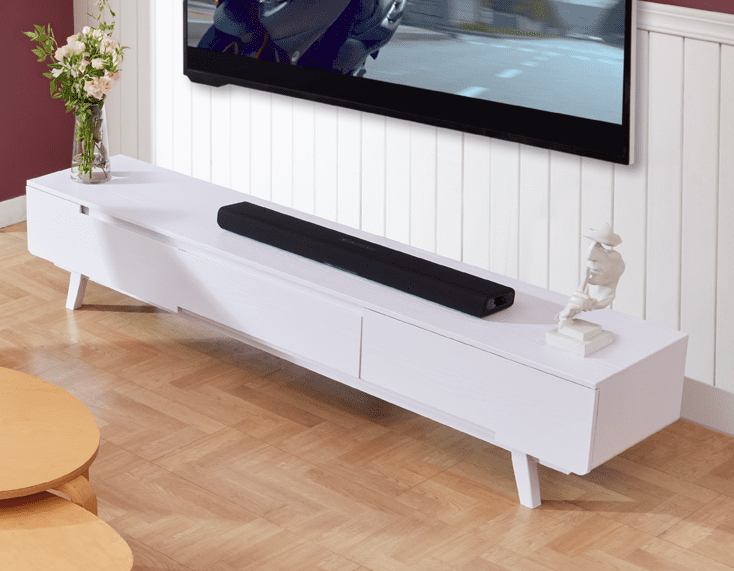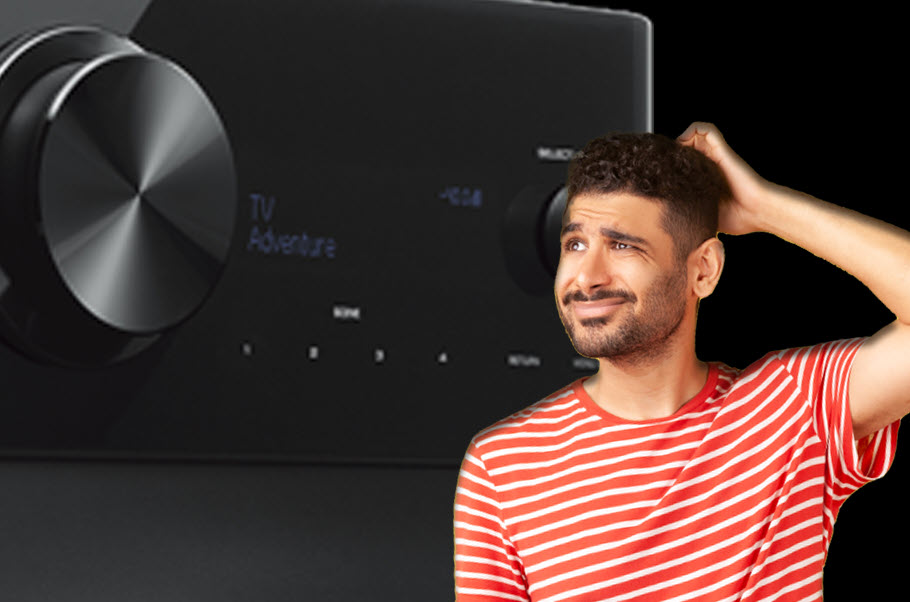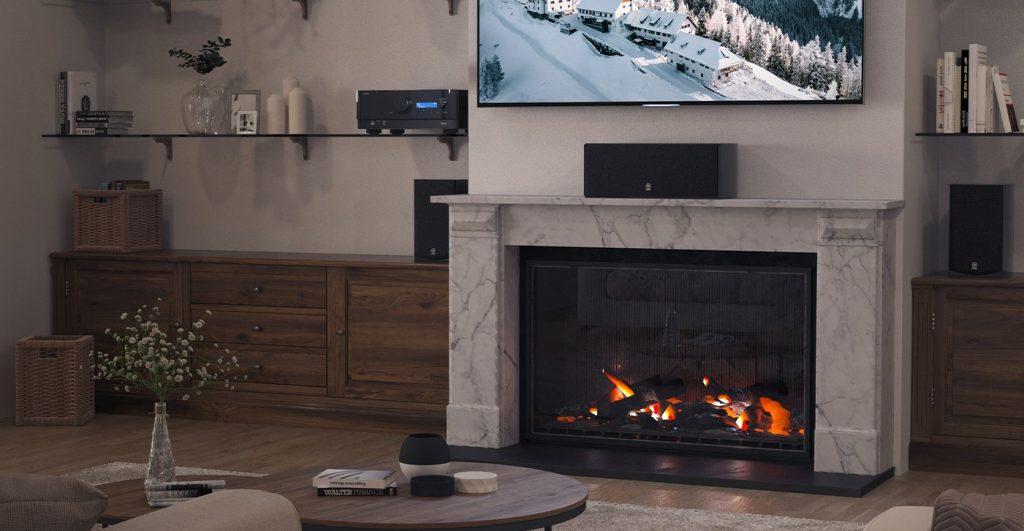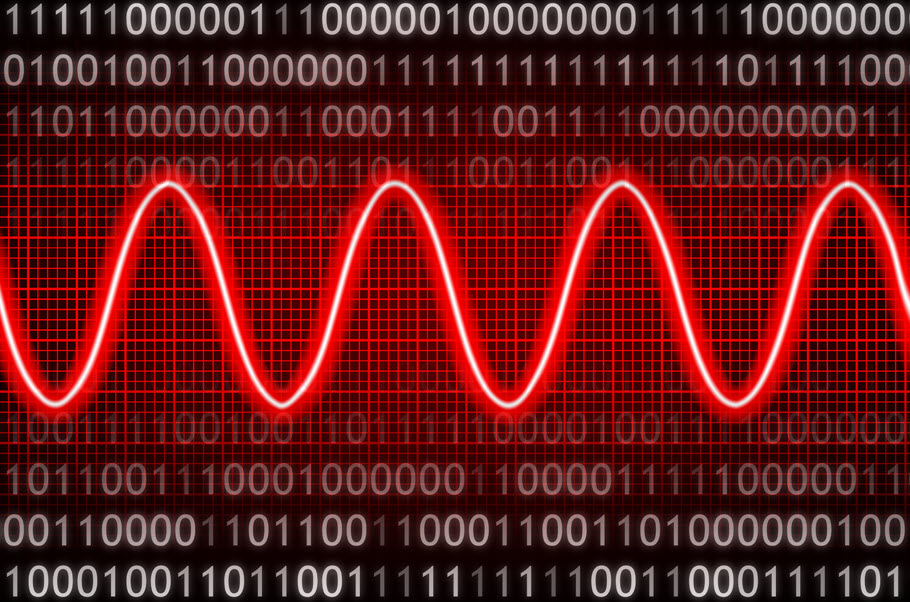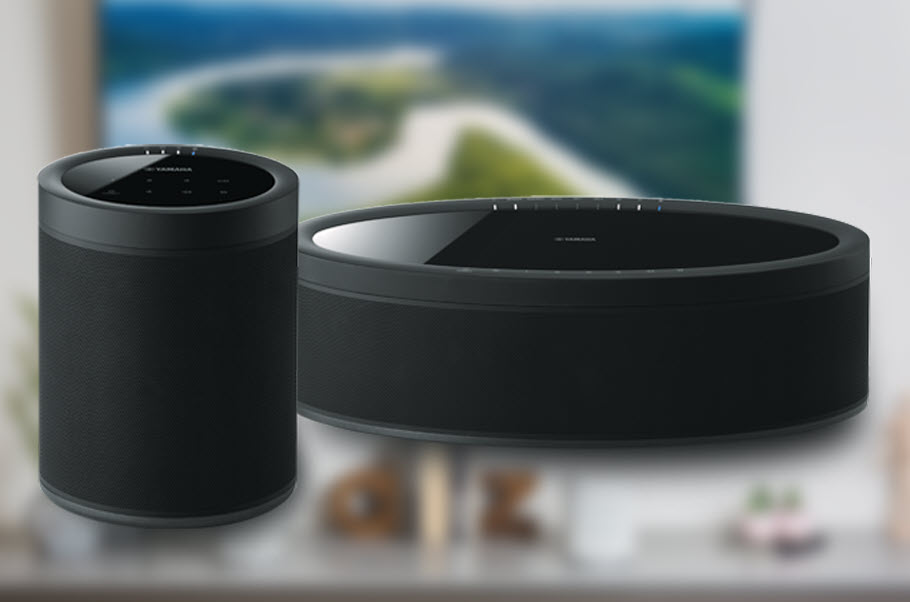Hi-Fi Starter Guide
Ready for a serious stereo experience? Here’s what you need to know.
So you’re looking to build a stereo system. You’re in the right place. The simplicity and surprising satisfaction of two-channel listening cannot be overstated.
Two-channel stereo systems offer unique advantages over sound bars and multichannel AV receivers. Sound bars typically can’t offer the pure sound quality and upgradability of a stereo receiver; AV receivers, while awesome for surround sound, come with the inherent complexities needed to deliver immersive 3D sound (i.e., multiple speakers, video switching and a myriad of surround processing options). A two-channel system fits comfortably in-between these two options. For many, the two-channel experience is just the right blend of sophistication and performance.
The three main components of a stereo system are:
1. A two-channel amplifier or receiver
2. One or more content source devices
3. A proper pair of speakers
While every component in the chain affects the sound quality and overall experience, here are a few basics to help you craft a system that packs a punch.
The Amplifier
The receiver or amplifier is the cornerstone of every stereo system. Choosing the right model depends upon whether you’re looking for baseline simplicity, future expandability or pure music reproduction … or maybe all three. Let’s explore your options.
Stereo receivers not only amplify the signal to drive your speakers but also allow you to easily select all connected components such as turntables, CD players, etc. They also have built-in content sources like AM/FM tuners and in some cases Bluetooth® capability and even network streaming content. Think about what’s important to you.
Integrated amplifiers like the Yamaha A-S501 (shown below) are considered the next step up in sound quality. They are optimized to perform the essential function of accurately amplifying the sound, and while they allow you to select connected components, there are no built-in sources with these guys. Typically, they have larger power supplies than an equally priced stereo receiver, which delivers improved dynamics and better sound quality.

Pro Tip: When selecting a stereo receiver or amplifier, power in the 80-100 watt range is sufficient for most home applications. 10 to 20 watts either way is not acoustically discernable, so try not to put too much emphasis on these numbers. The physics of sound reproduction tell us that in order to hear something twice as loud, the amplifier needs to output 10 times the power. So to make an 80 watt system sound twice as loud, you’d have to replace it with an 800 watt-per-channel amplifier!
Instead of being swayed by the power ratings, focus on the features you’re going to use. Is Bluetooth or network streaming most important to you, or is a built-in phono preamp and/or sonic performance what you need for the listening experiences you want to explore? Start there.
Select Your Sources
Both receivers and integrated amplifiers offer a great deal of connection options and system expandability — in fact, that’s perhaps the biggest benefit of building a two-channel system. Here are some of the sources you might want to connect:
Turntables are the nostalgic backbone of Hi-Fi, and the analog signal generated by the vinyl records they play is considered by many to be the purest method of sound reproduction. What’s more, listening to vinyl is an interactive sport. Collecting new albums, cleaning the records, physically placing the needle on them and enjoying the album art and liner notes are all part of getting more of your senses involved in the listening session.
Another great thing about turntables is that you can always replace the included cartridge with a higher performance replacement. With this simple upgrade, your system will move to the next level of sound reproduction.
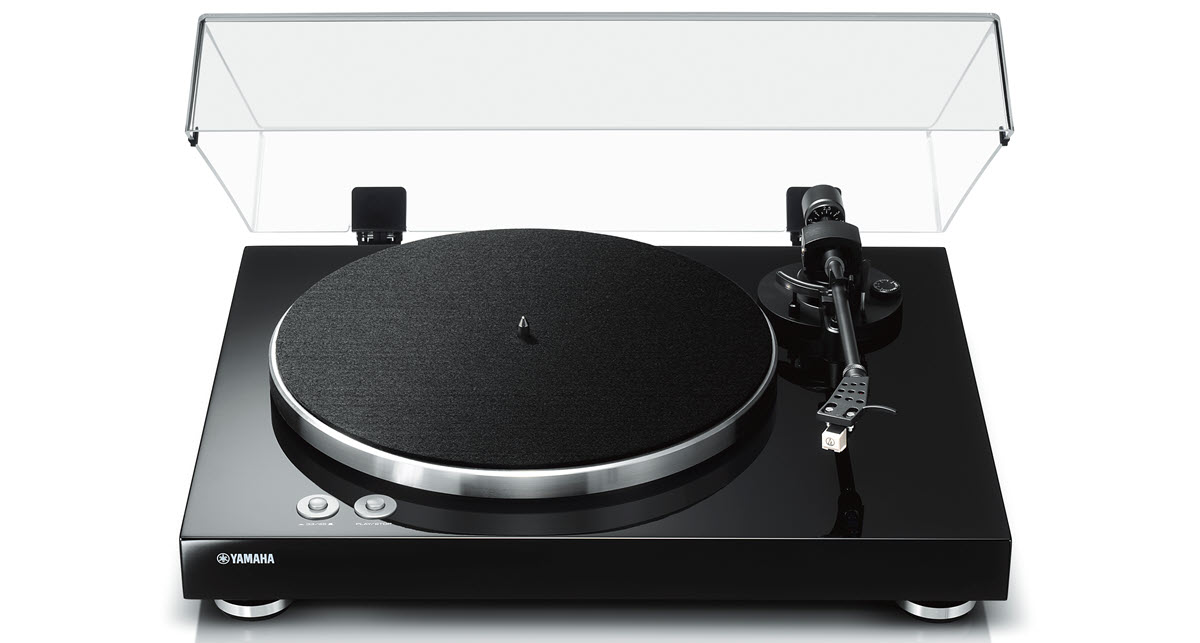
Pro Tip: If your receiver or amplifier has a dedicated phono input, it will work with any turntable. If your amplifier doesn’t have a phono input, don’t worry. Many modern turntables (like the Yamaha TT-S303, shown above) have a built-in phono preamp, making them compatible with any receiver or amp. For more information about connecting a turntable, check out this blog posting.
CD Players offer a solid option as your audio source. Compact Discs (CDs) were introduced decades ago as a replacement for vinyl records, without the problems of surface noise and the potential for scratches. If you already have a collection, put all that music to use with either a single disc CD player such as the Yamaha CD-S1000 (shown below) or a multi-disc CD changer.

Pro Tip: If your CD collection is sparse, you should take a look at the secondhand market. Online sellers such as eBay, as well as yard sales, thrift stores and flea markets often offer exceptional deals. And unlike used vinyl, which is susceptible to scratches that degrade the sound, most used CDs, if well-cared for, will sound as good as new.
AM/FM tuners are another great add-on to an integrated amplifier, giving you full access to free over-the-air broadcasts.
Streaming Options
Bluetooth is a great option if you stream a lot of content on your devices. You’ll appreciate being able to listen to all that content through good-quality stereo speakers! Simply pair your smartphone or tablet with a Bluetooth-enabled receiver and start enjoying a world of music in Hi-Fi.
AV receivers with built-in streaming services take out the middle man (your phone or tablet) by letting you stream directly to your speakers to produce a much cleaner sound. The same goes for TV audio: Simply connecting the optical output of your TV to a compatible receiver automatically upgrades your viewing experience.
Speakers
Speakers are the components that convert electrical signals from the amplifier to the sound that we hear. Technically, they’re known as transducers, but all you need to know for the purposes of this posting is that by moving air, they send sound waves across the room to your ears.
When done right, two speakers will give you an almost 3D-quality sound image. But speakers come in a wide variety of shapes and sizes, and audio quality is really subjective — what sounds good to one person may not seem so good to another.
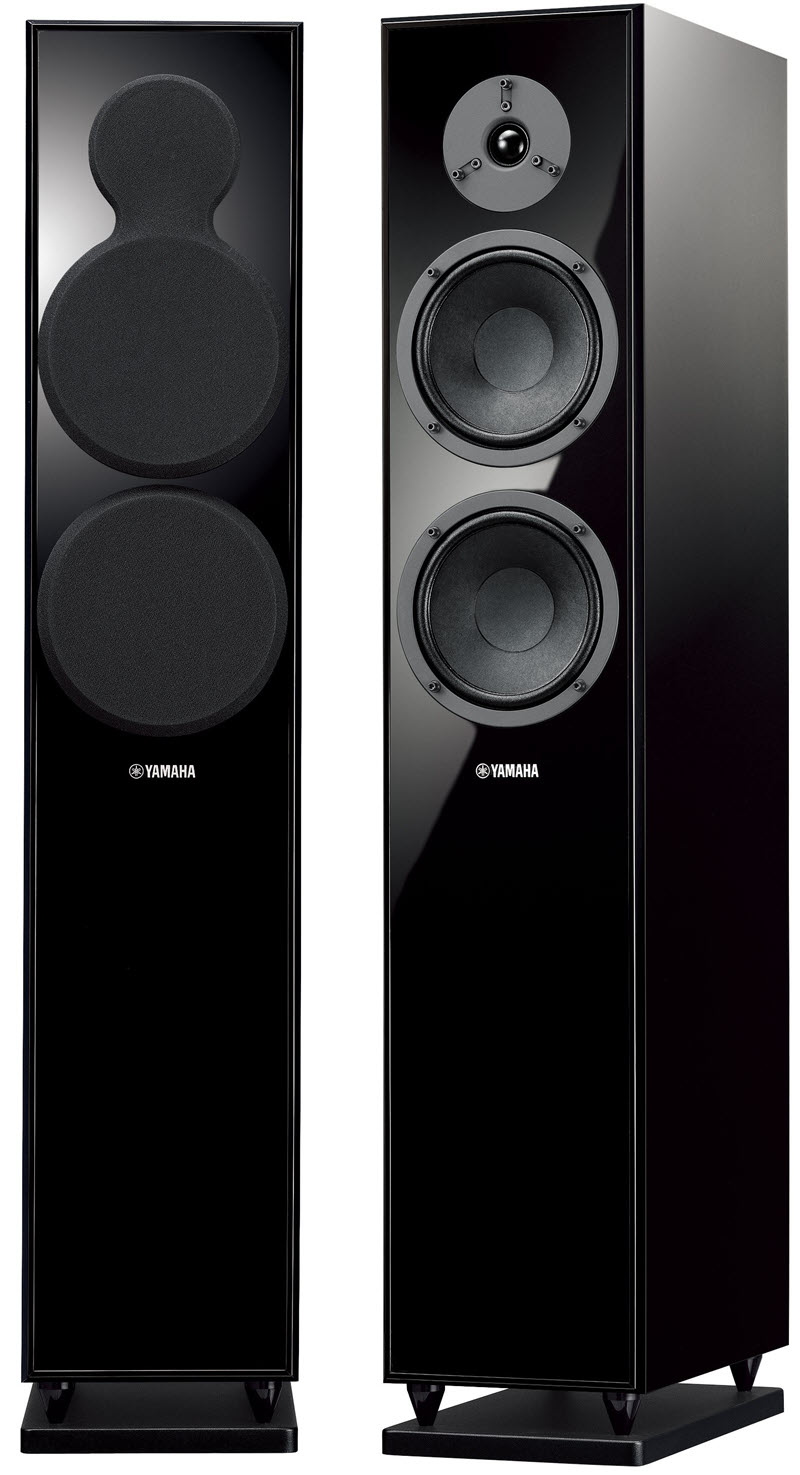
So how do you know which to buy? A very rough rule of thumb is this: The larger the speaker, the more bass or low-end you’re going to hear.
Floor-standing speakers like the Yamaha NS-F150 (shown on the left) give you the biggest sound and perform best when given a little breathing room. If your room has plenty of space, spread out the speakers at least a foot or two from adjacent furniture or walls. If the only way to fit them in your room is to cram them in a corner, try bookshelf speakers instead.
Bookshelf speakers like the Yamaha NS-6490 (shown below) are smaller in size and can be placed in wall units, on furniture or on speaker stands. Due to their smaller size, reproducing deep bass notes are not their forte, but that’s easily remedied with the addition of a powered subwoofer.

Subwoofers will give you the bottom end of a floor-standing speaker with the added flexibility of being to place all your speakers unobtrusively. Connecting a subwoofer to your amplifier or receiver is simple, as long as the amp/receiver has a dedicated subwoofer output, and subs can be placed pretty much anywhere since the bass frequencies they reproduce do not seem to our ears to come from any particular location.
Choosing the right subwoofer depends on how much bass you want generate and how large your room is. Does it have vaulted ceilings? An open floor plan? These two factors mean that you will need a larger subwoofer to fill the room with bass. (For more information on subwoofers, check out our blog posting entitled “What Is A Subwoofer?”)

Pro Tip: Figuring out how much to spend on your speakers is important if you want to get the best overall performance for your budget. A very rough estimate is spending one to two times as much on your speakers as you spend on the electronics. A $300 receiver will perform great with a $500 to $600 pair of speakers. But a $600 amplifier paired with a $100 pair of compact speakers will not show off its potential.
Upgrade Away!
Perhaps the best part of building a stereo component system is the ability to upgrade different elements as your preferences change. Want more inputs or a network receiver for Wi-Fi connectivity? Change it out later. Remember, you can continue to use your existing speakers and sources until you’re ready to upgrade them too.
Hi-Fi listening can take you as far as you want to go. What’s more, it gives you the ability to hear music the way it was intended: in pure two-channel stereo.
Here are some related blog posts that provide additional information about Hi-Fi audio:
Dialing in the Perfect Two-Channel Experience
What’s A Receiver? Part 1: Hi-Fi
How to Connect a Turntable to an AV Receiver
Five Reasons Vinyl Is Making a Comeback
How to Stream Hi-Fi Quality Audio at Home
Click here for more information about Yamaha Hi-Fi components.
Click here for more information about Yamaha speaker options.










